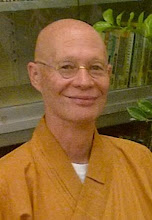Monday, December 6, 2010
Discovering Compassion in a Temple Stay
A temple stay at Guang Jue Temple in Zaoxi China leaves an indelible mark on those who visit due to its rich history of faith and survival.
It was 1953. The Qing Dynasty temple in its glory days had over 200 monks and nuns in devotion to the Amitabha Buddha. Many devotees would come as far away as Shanghai to worship there. But there was a dark cloud now looming over the area of Hangzhou. The Japanese forces had once before penetrated into the region. Now as a result of strong and often brutal Chinese resistance the Japanese air power was to make another strike at Hangzhou.
Chinese Buddhism had flourished over the centuries but China was now to enter a darker period. The monks and nuns at Guang Jue temple were far away enough from the fighting in the East. After all, Zaoxi was an insignificant little village amid the mountains. However, that day in 1953 was to change there lives. Suddenly there was the load roar of aircraft flying in formation approaching from the West and in an instant there were load explosions as bombs were dropped randomly as the Japanese aircraft approached Hangzhou. The temple had been hit.
No one really knows how many were wounded. There are suggestions that all survived but scattered in fear of another raid. Only one nun remained. Two of the temples were completely destroyed. All buildings were badly damaged. One small temple remained with gaping holes in the side.
Those staying at a temple stay in this tranquil Chinese Buddhist temple enter the main gates greeted by the Maitreya Buddha in the first hall. Immediately the guest is reminded of the past as this is the last remaining hall to be reconstructed. This is where the sole nun lived, slept, prayed and chanted in solitude until some forty years later she was joined by some local people to who came to support her.
In a temple stay here you meet the Venerable Master Zheng Rong, the monk who came from Hangzhou ten years ago to find the nun who survived and was commissioned to bring her back to a Sangha (a community of monks and nuns). Master Zheng Rong describes the day he arrived. The bamboo forest had become overgrown and there was only a barely distinguishable track through the forest to the ruins. When he entered the devastated monastery he took sight of the nun sitting on some rubble, head bowed reciting the Buddha name with her rosary beads. He was instantly moved to tears at the sight of such faith and devotion.
Is there anger and resentment of the deeds of the past? “No”, replies Master Zheng Rong. “We must build the future in the present moment. We cannot build a peaceful and harmonious future from anger or hatred but only from compassion. What happened was a result of our own negative Karma, our own impure deeds. It reminds us that we can reshape our destiny.” A broad and gentle grin beams across his face like sun coming out from behind clouds on a winter’s day.
The history of Guang Jue Temple is one forged in the faith of one nun who remained to re-chart the course of destiny. Her fingers and rosary beads worn thin with the intense daily chanting and meditation have born fruit. Guests on a temple stay do not find libraries of sutras. Instead they find what is at the heart of Pure Land Buddhism – faith and compassion. Guests staying at this old Chinese temple are changed by the power of the parable it presents, by its peace and its whispering call to compassion.
Many of us have done things in our past we have regretted, things born from the darkness of our lives from which the Karma like a bacteria hatches and flourishes. As a result we may have emotionally or physically damaged lives As humans we are capable of great destruction and we are as equally capable of great compassion and great achievements.
“How can I learn the way of Pure Land Buddhism?” I asked the Master one morning. Master Zheng Rong chuckled with a grin coming across his face again: “Compassion IS the way. There is no other way.” he replied.
Subscribe to:
Post Comments (Atom)



No comments:
Post a Comment